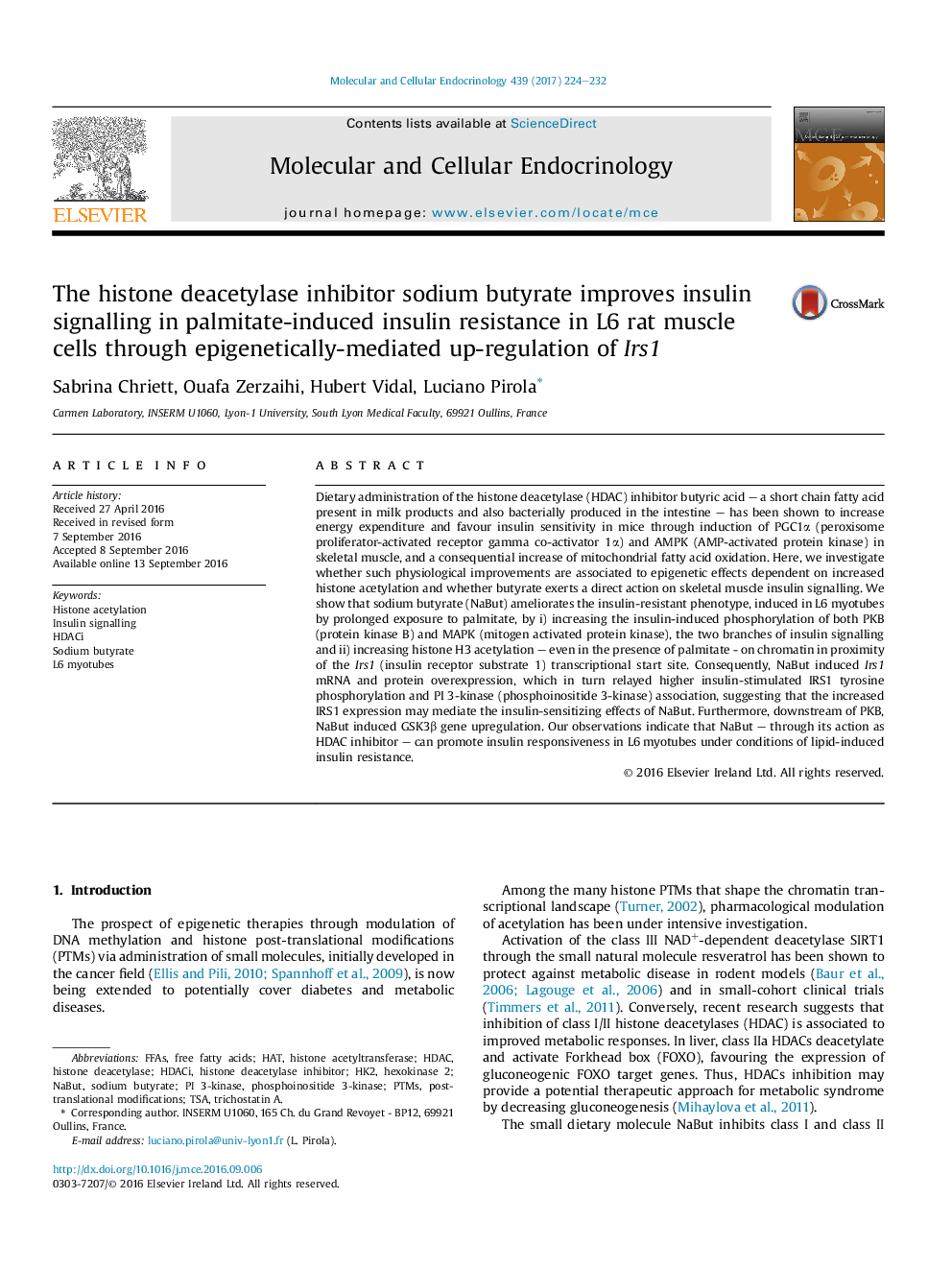| Article ID | Journal | Published Year | Pages | File Type |
|---|---|---|---|---|
| 5534314 | Molecular and Cellular Endocrinology | 2017 | 9 Pages |
â¢Sodium butyrate (NaBut) is a histone deacetylase (HDAC) inhibitor.â¢NaBut ameliorates the insulin-resistant phenotype, induced by prolonged exposure to palmitate in L6 muscle cells.â¢NaBut improves insulin-induced phosphorylation of PKB and MAPK in insulin-resistant cells.â¢NaBut causes histone H3 hyperacetylation on chromatin in proximity of the Irs1 transcriptional start site.â¢NaBut promotes insulin responsiveness in L6 myotubes under conditions of lipid-induced insulin resistance.
Dietary administration of the histone deacetylase (HDAC) inhibitor butyric acid - a short chain fatty acid present in milk products and also bacterially produced in the intestine - has been shown to increase energy expenditure and favour insulin sensitivity in mice through induction of PGC1α (peroxisome proliferator-activated receptor gamma co-activator 1α) and AMPK (AMP-activated protein kinase) in skeletal muscle, and a consequential increase of mitochondrial fatty acid oxidation. Here, we investigate whether such physiological improvements are associated to epigenetic effects dependent on increased histone acetylation and whether butyrate exerts a direct action on skeletal muscle insulin signalling. We show that sodium butyrate (NaBut) ameliorates the insulin-resistant phenotype, induced in L6 myotubes by prolonged exposure to palmitate, by i) increasing the insulin-induced phosphorylation of both PKB (protein kinase B) and MAPK (mitogen activated protein kinase), the two branches of insulin signalling and ii) increasing histone H3 acetylation - even in the presence of palmitate - on chromatin in proximity of the Irs1 (insulin receptor substrate 1) transcriptional start site. Consequently, NaBut induced Irs1 mRNA and protein overexpression, which in turn relayed higher insulin-stimulated IRS1 tyrosine phosphorylation and PI 3-kinase (phosphoinositide 3-kinase) association, suggesting that the increased IRS1 expression may mediate the insulin-sensitizing effects of NaBut. Furthermore, downstream of PKB, NaBut induced GSK3β gene upregulation. Our observations indicate that NaBut - through its action as HDAC inhibitor - can promote insulin responsiveness in L6 myotubes under conditions of lipid-induced insulin resistance.
